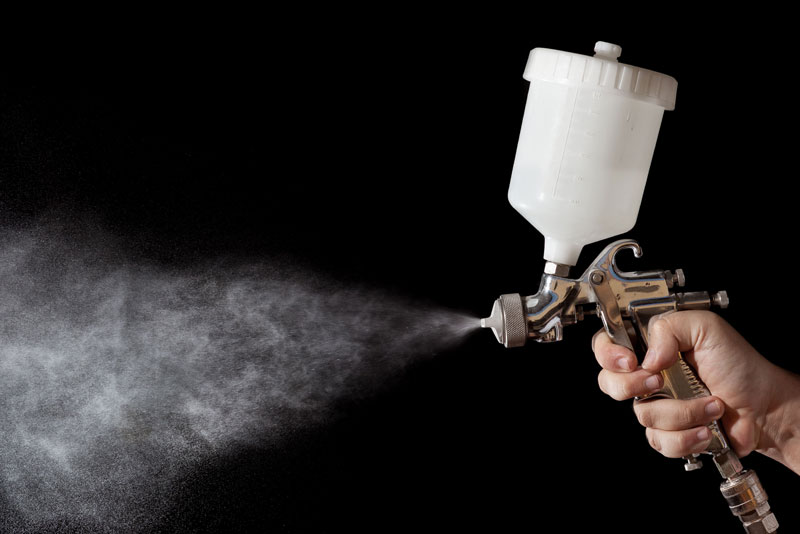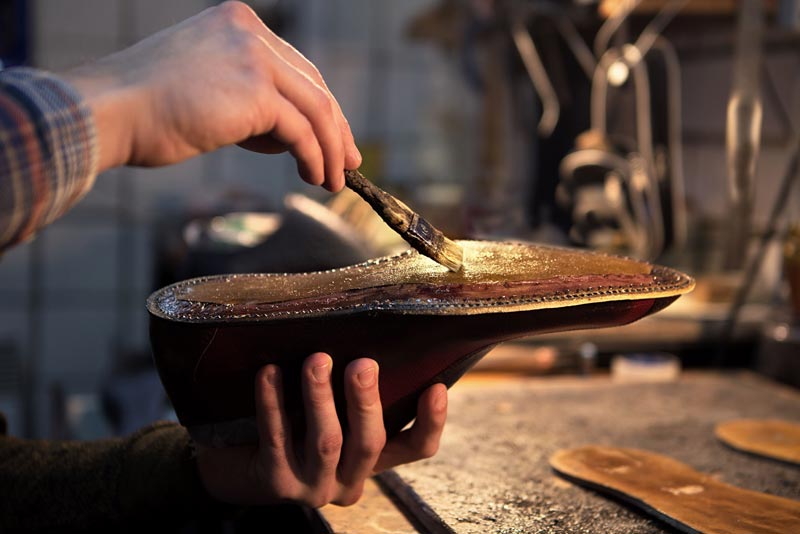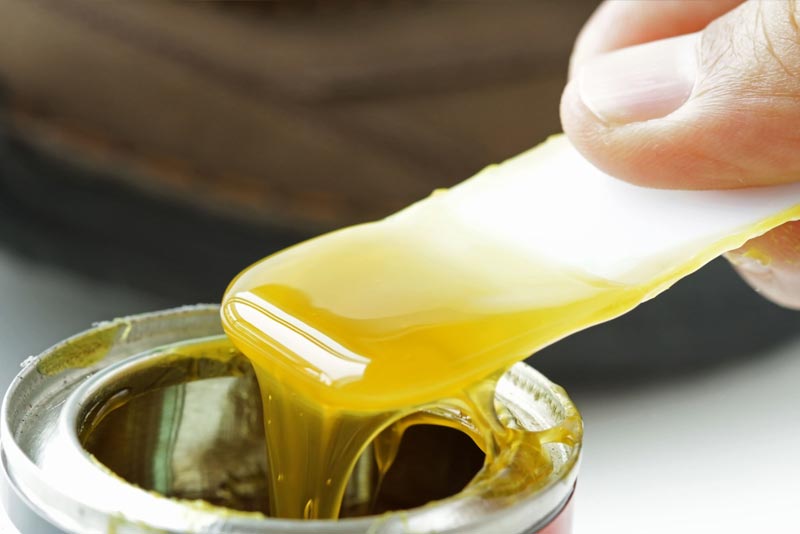Chloroprene
What is Resonac Chloroprene?
Resonac Chloroprene is a Chloroprene rubber, also known as “Neoprene rubber”. Resonac Chloroprene rubber (CR) It is a type of synthetic rubber used as Elastomer in many industries with a wide range of applications, such as automotive (belts and hoses), construction (waterproofing and sealing), adhesives, or wire and cables. The properties of Resonac Chloroprene are highlighted by a high resistance to sunlight, ozone, flame, weathering, many oils and chemicals, low and high temperatures, and toughness against abrasion or general wear. These versatile properties have long been the key to Resonac Chloroprene’s utility as a multi-purpose rubber. Our product is available in over 30 grades, produced as either dry chips or aqueous dispersions (Latex).
About LATEX (Liquid Dispersions)
Resonac Chloroprene latices are emulsions of polymerized chloroprene dispersed in water; containing emulsifying agents and stabilizers.
Our latices are viscous off-white liquids which solid contents are ranged from 42% to 60%.¬ Resonac Chloroprene latex is available in over 15 different grades, each tailored to meet the requirements of specific end uses.
Application
Adhesives

Our latices are viscous off-white liquids which solid contents are ranged from 42% to 60%.¬ Resonac Chloroprene latex is available in over 15 different grades, each tailored to meet the requirements of specific end uses.


Latex grades
| Grade | Polarity | Solid content(%) | Polymer structure | Crystallization rate | Other characteristics | Application (right side of Solid content) | |
|---|---|---|---|---|---|---|---|
| Gel content | Polymer structure | ||||||
| 400 | Anionic | 50 | Medium | Copolymer | Extremely fast | Ozone, Weatherability | Bonded fibers, Coatings, Adhesives |
| 750 | Anionic | 50 | Medium | Copolymer | Extremely slow | Flex, excellent elasticity | Adhesives, Dipped Goods |
| 654 | Anionic | 59 | Low | Copolymer | Low | Low modulus | Dipped goods, Fabric impregnation (binder) |
| 842A | Anionic | 50 | High | Homopolymer | Very slow | High cure rate | Treated Paper, Bonded Fibers, Coatings |
| 671A | Anionic | 59 | Med-High | Homopolymer | Medium-Slow | High wet gel strength | Dipped goods, Mastics, Bonded fibers, Adhesives |
| SL101 | Non ionic | 59 | Med-High | Homopolymer | Medium-Slow | Colloidal stability at low pH | Asphalt Modification, Colloidal stability at low pH |
| 572 | Anionic | 50 | High | Homopolymer | Fast | Quick Grab strength | Adhesives, Fabric impegragnation (Binder) |
| 571 | Anionic | 50 | High | Homopolymer | Slow | General Purpose, High cure rate | Dipped Goods, Adhesives |
| 115 | Non ionic | 47.5 | Low | Copolymer | Slow | Carboxylated,Hot bond strength | Contact adhesives, Coatings, Mastics, Sealants, Asphalt modification |
| SL81 | Non ionic | 46.5 | Sol (No gel) | Copolymer | Very slow | Carboxylated,Tackiness | Contact adhesives, Pressure sensitive adhesive, Colloidal stability at low pH |
| SD77S | Anionic | 55 | Sol (No gel) | Homopolymer | Very fast | Quick break for foam bonding | Adhesives, Excellent quick break with decent stability |
| SD100 | Anionic | 55 | Sol (No gel) | Homopolymer | Very fast | Excellent Quick break for foam bonding | Adhesives, Excellent quick break with decent stability |
About DRY CHIP (Dry grade)
Application

Solvent based Adhesive


Dry Chip grades for general purpose
| Type | Grade | Mooney Viscosity (ML 1+4,100℃) |
Crystallization rate | Other characteristics |
|---|---|---|---|---|
| Sulfur-modified Group | GW | 37-49 | Slow | Sulfur modified G type with better heat and compression setresistance than GN and GRT |
| Basic Group | W | 42-51 | Medium | Standard grade for general purpose |
| WHV | 109-130 | Medium | Higher viscosity version of W for high loading application andgeneral adhesives | |
| WHV100 | 95-105 | Medium | Lower viscosity version of WHV | Crystallization Resistant Group |
| SND5 | 67-76 | Very Slow | Higher viscosity version of WXJ | |
| SND8 | 32-37 | Very Slow | Lower viscosity version of WXJ | |
| WRT | 42-51 | Extremely slow | Excellent low temperature properties | Extrusion & Calendering | WB | 42-51 | Medium | Best extrusion and calendering properties |
| Low Mold Fouling Group | WK | 42-51 | Medium | Better mold release version of W with good mill-and flow-ability |
| Specific Group for Extrusion, Calendering | TW | 42-51 | Medium | Superior extrusion and calendering grade with good tensileproperties |
| TW100 | 85-102 | Medium | Higher viscosity version of TW for high loading use | |
| TRT | 42-51 | Extremely slow | Excellent low temperature properties with better processability |
Dry Chip grades for adhesive application
| Grade | Mooney Viscosity (ML 1+4,100℃) |
Crystallization rate | Form | Other characteristics |
|---|---|---|---|---|
| W | 42-51 | Medium | Chip | Most common grade |
| WHV | 109-130 | Medium | Slice | Higher viscosity version of W. |
| WHV100 | 95-105 | Medium | Chip | Lower viscosity version of WHV |
| WHV140 | 86-130 * | Medium | Slice | For high viscosity adhesive |
| WRT | 42-51 | Extremely slow | Chip | Extremely soft film and high tack at low temperature |
| AD | 33-46* | Very fast | Slice | Adhesives and paints use with good solution viscosity stability |
| AF | 45-115** | Slow | Chip | Excellent hot bond strength. Carboxylated |
| AG | 80-130 | Medium-Slow | Slice | Excellent sprayability, thixotropy |
* Brookfield viscosity of 5% raw polymer solution in toluene at 25℃, [mPa・s]
** Brookfield viscosity of 10% raw polymer solution in toluene/hexane(60/40 vol/vol) at 25℃, [mPa・s]
Inquirer about product
Please subscribe our technology eNewsletter!
Inquiry about product
Please inquire about product, technology or samples from here.